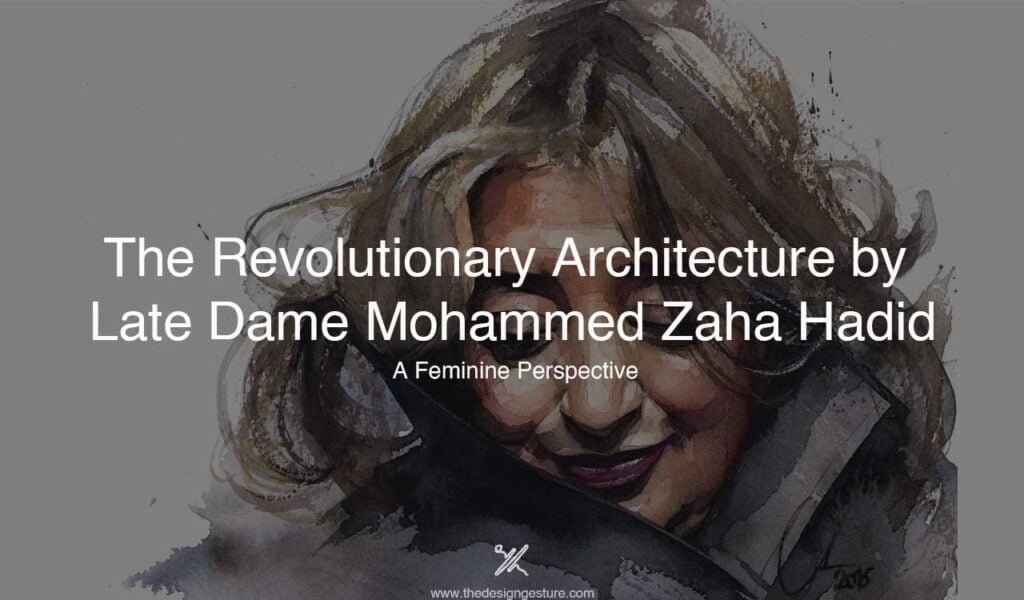Introduction
One of the most well-known and influential people of her generation was a British – Iraqi architect late Dame Mohamed Zaha Hadid. She is most well-known for her enduring and significant architectural works. With her avant-garde designs that pushed the boundaries of modern architecture, she left behind a lasting legacy that still has an effect on the world of architecture today.
Born in Baghdad, Iraq, on October 31, 1950, Zaha Hadid grew up in a culturally diverse environment. The first contemporary hotel in Baghdad was founded by her affluent industrialist father, Mohammed Hadid, who also supported his daughter’s interest in the fine arts and architecture. Wajiha Sabounji, her mother, was also an artist. Hadid grew and raised in a cosmopolitan upbringing and frequently visited the United States of America and the Europe.
In a subsequent conversation, Hadid described how visits to the ancient Sumerian sites in southern Iraq as a young child first ignited her interest in architecture and design.
Hadid attended boarding institutions in England and Switzerland in the 1960s. Before relocating in 1972, to London, Hadid studied mathematics at the American University of Beirut in Lebanon. Her studies at the Architectural Association School of Architecture in London continued under the supervision of Rem Koolhaas, Elia Zenghelis, and Bernard Tschumi who were her professors. Upon her graduation, her former professor Koolhaas called her “a planet in her own orbit.” She was the most exceptional student Zenghelis had ever had. “We called her the inventor of the 89 degrees. Nothing was ever at 90 degrees. She had spectacular vision. All the buildings were exploding into tiny little pieces.”
She briefly worked at the Office for Metropolitan Architecture, Rotterdam under her former professors, Rem Koolhaas and Zenghelis, after getting her graduation in architecture in 1977.
Zaha Hadid and her works
The fluidity and curved curves of Hadid’s style are its defining features. Her assertiveness and dynamic manner are frequently reflected in her works. She frequently uses organic shapes that resemble natural forms, flowing curves, sweeping lines, and other elements in her designs. Her constructions frequently have organic shapes that meander and zigzag through space, appearing to defy gravity. The conventional rectilinear forms of contemporary architecture are contested by these organic forms. Her abstract forms are also influenced by the materials she uses and the way she manipulates the structure. Because it reduces conventional architectural conceptions to sculptural forms, this architectural style has been referred to as “deconstructive” or “post-structuralist.”
The core of Hadid’s design philosophy was to push the limits of what was possible in building. She believed that by coming up with novel and thought-provoking concepts, she could challenge the status quo and inspire others to reevaluate how they view the built environment. She believed that architecture might be a tool for social and cultural transformation. Hadid viewed herself as a visionary who could imagine and make real novel possibilities for the future in her capacity as an architect.
She established her own architectural practise, Zaha Hadid Architects (ZHA), in London in 1980 in addition to her solo projects. The company immediately established a reputation for its cutting-edge designs and won numerous global contests. Hadid’s work didn’t, however, become well known until the 1994 opening of the Vitra Fire Station in Weil am Rhein, Germany. The Vitra Fire Station was the first of several well-known contracts that would solidify Hadid’s standing as a top architect in the globe. In the present, ZHA is a multinational firm with 12 regional offices, specialises in producing high-quality designs through collaborating with clients and employees to produce projects that are well-rounded.
Several prominent structures were created by Zaha Hadid Architects throughout the world. Many of Hadid’s well-known pieces of art include: Hadid’s first significant contract was the Vitra Fire Station in Weil am Rhein, Germany, which was finished in 1994. Cincinnati, Ohio’s Rosenthal Center for Contemporary Art: The Rosenthal Center for Contemporary Art is a striking structure with a number of overlapping and crossing planes that was finished in 2003. The building’s fluid shape gives off a sense of motion and dynamism that mirrors the vitality of the contemporary art on display inside.
Other notable works include the Cardiff Bay Opera House, the Guangzhou Financial District, the Bridge Pavilion Seville, the London Aquatics Centre, which was built for the 2012 Olympics, the Guangzhou Opera House, which was finished in 2010, the Salerno Maritime Terminal, the Pierresvives Government Building, the Grace on Coronation Apartments, the London Aquatics Centre, and the Hong Kong Peak Leisure Club, among others.
In the field of architecture, Zaha Hadid is renowned beyond measure. She received the coveted Pritzker Architecture Award for the first time in 2004 becoming the first women to receive the award. She was the first woman to receive The Stirling Prize, consecutively in the years 2010 and 2011. She was also the first woman to Royal Institute of British Architecture’s (RIBA) Gold Medal in year 2015. She has also received six Honorary Doctorates from universities including Harvard University, The University of Oxford, The University of Cambridge, and The University of Edinburgh, others. She has also been nominated for the American Institute of Architects Gold Medal Award.
In conclusion Zaha’s talent as described by her professor, Rem Koolhaas, “A Planet in Her Own Orbit” upon graduation, demonstrating Zaha’s talent from an early age. She is one of the most influential architects in history thanks to her sense of style and design philosophy. Her impressive successes are a result of her original designs, which have altered the face of modern architecture all around the world.




